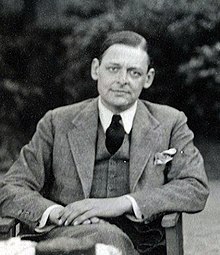 | |
| Poetry ↙ | 26 |
|---|---|
| Plays ↙ | 9 |
| Fiction ↙ | 1 |
| Non-fiction ↙ | 45 |
| Letters ↙ | 8 |
| References and footnotes | |
The T. S. Eliot bibliography contains a list of works by T. S. Eliot. [1]
 | |
| Poetry ↙ | 26 |
|---|---|
| Plays ↙ | 9 |
| Fiction ↙ | 1 |
| Non-fiction ↙ | 45 |
| Letters ↙ | 8 |
| References and footnotes | |
The T. S. Eliot bibliography contains a list of works by T. S. Eliot. [1]
The following is a list of books of poetry by T. S. Eliot arranged chronologically by first edition. [Note 1] Some of Eliot's poems were first published in booklet or pamphlet format (such as his Ariel poems .)
The following is a list of plays by T. S. Eliot arranged chronologically by first edition. [1]
The following is a list of non-fiction books by T. S. Eliot arranged chronologically by first edition. [1]
The following is a list of books of letters by T. S. Eliot arranged chronologically by first edition. [1]
The following is a list of works about T. S. Eliot and his works. [1]
{{cite book}}: CS1 maint: location missing publisher (link){{cite book}}: CS1 maint: location missing publisher (link)